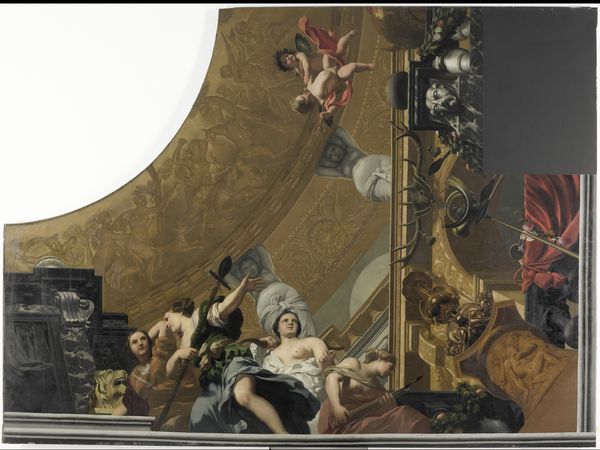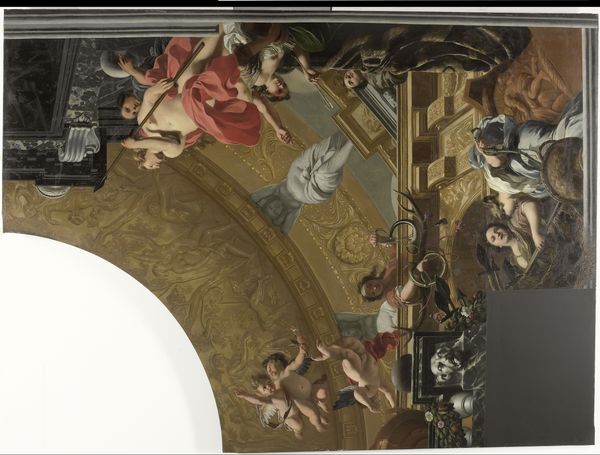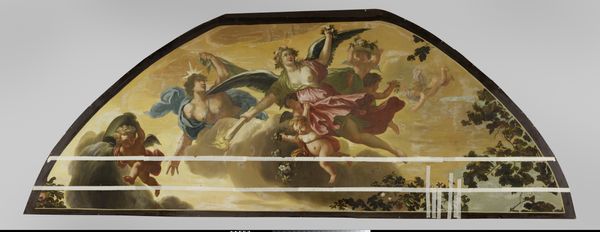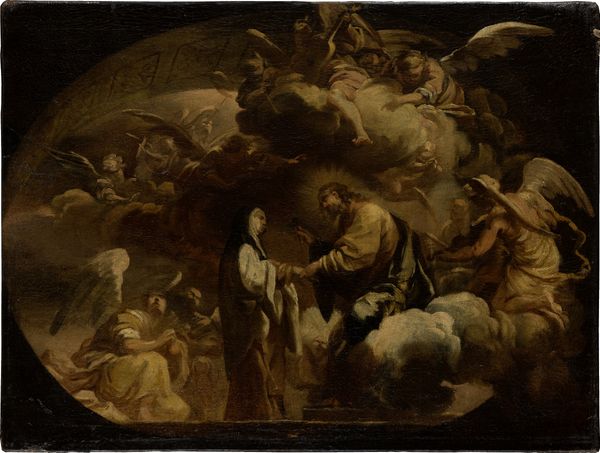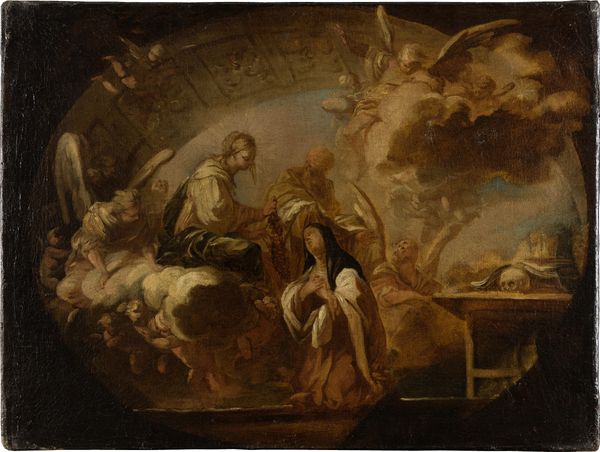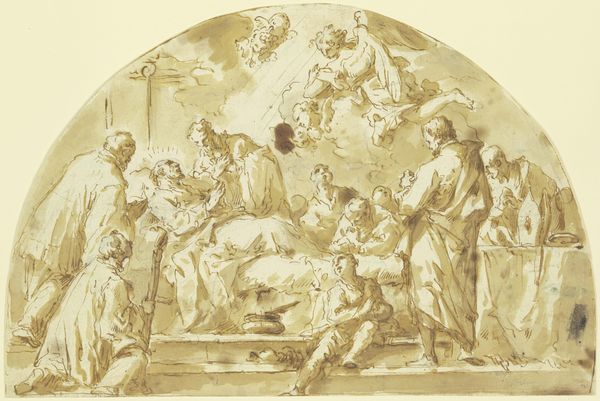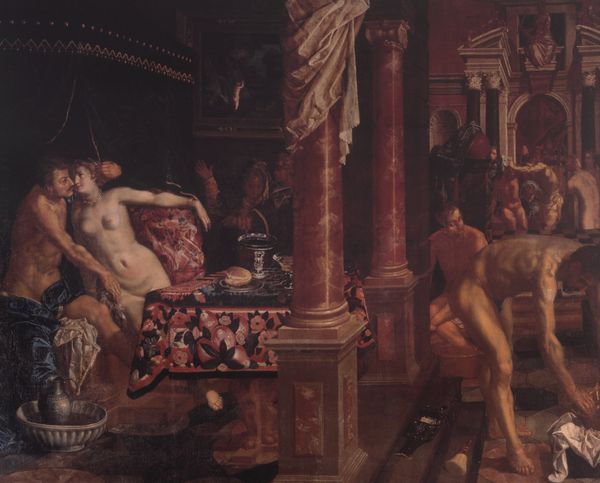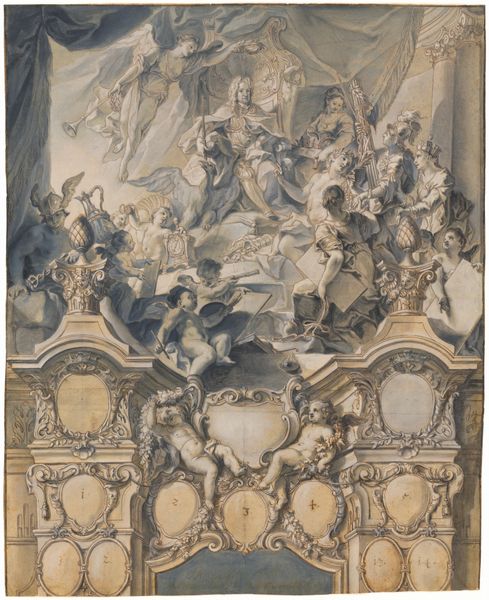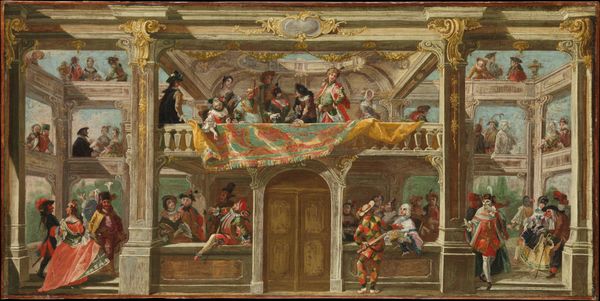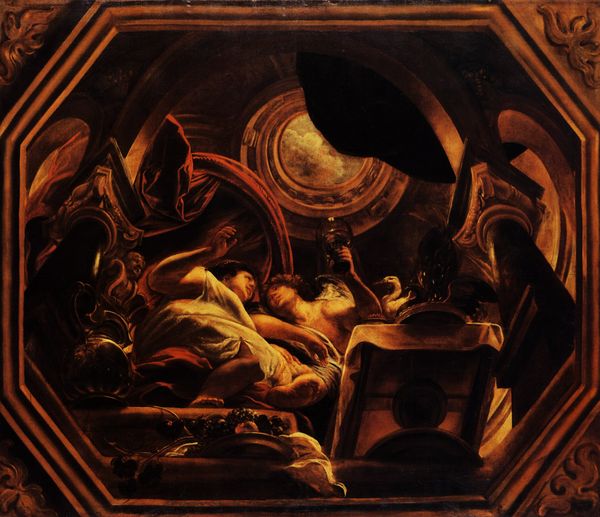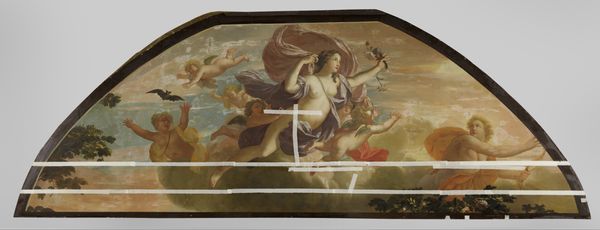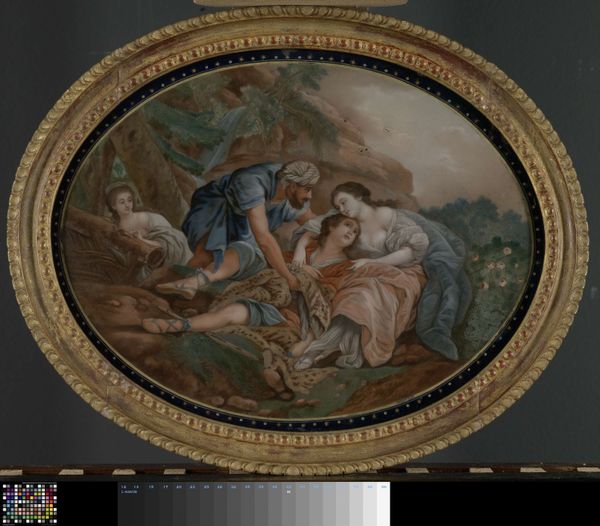
Onderdeel (linksonder) van een plafondschildering met als hoofdvoorstelling Diana en haar gezellinnen c. 1676 - 1682
0:00
0:00
painting, oil-paint, fresco
#
allegory
#
baroque
#
painting
#
oil-paint
#
sculpture
#
figuration
#
fresco
#
history-painting
Dimensions: height 290.5 cm, width 394.5 cm, depth 4 cm, weight 60 kg
Copyright: Rijks Museum: Open Domain
Editor: Here we have “Onderdeel (linksonder) van een plafondschildering met als hoofdvoorstelling Diana en haar gezellinnen”, a fragment of a ceiling painting by Gerard de Lairesse, dating from around 1676-1682. The oil paint on, presumably, canvas makes the figures look heavy, almost sculptural. What catches your eye in this piece? Curator: Note the dynamic interplay of diagonals created by the figures’ poses and the architectural elements. This imparts a sense of movement and depth, despite its being a fragment. Also, consider how the artist uses the limited palette - earth tones contrasted with cooler blues and whites - to create a hierarchy, drawing our eye towards certain figures. What is the relationship, then, between line and form here? Editor: It’s true, there’s an energy despite the earth tones. I guess I was focused on the muted color. How do you read the composition? It feels almost intentionally chaotic. Curator: Intentional perhaps. It is Baroque after all. Yet if you carefully parse it, you'll notice a studied arrangement of bodies that gives structure to the upper reaches of the picture field. Notice how figures lead the eye into a spiral? This is highly refined visual artifice at play here, carefully calibrated use of rhetorical form, rather than pictorial reportage, isn’t it? Editor: I can see the spiraling motion you're referring to now, that the movement leads upwards, towards what remains of the architecture above. Curator: Exactly! And what can you now say of its surface versus illusion? The figures seem, to use your word, ‘sculptural’. Why do you think he deploys the artifice of tonal gradation, whilst equally creating linear and gestural breaks in the painting's plane? Editor: Seeing your perspective on its formal properties allows me to see that beyond the historical aspects of the artwork, de Lairesse composed it to create this visually rich painting. Thanks. Curator: Indeed, a testament to the lasting appeal of decoding how intrinsic formal structures convey such elaborate artistic ideas.
Comments
No comments
Be the first to comment and join the conversation on the ultimate creative platform.
